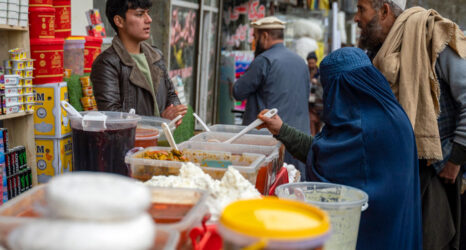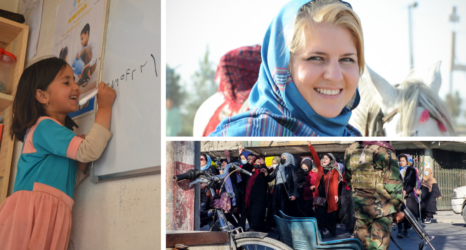In the year since the Taliban took over Afghanistan, life for the average Afghan woman has rapidly deteriorated.
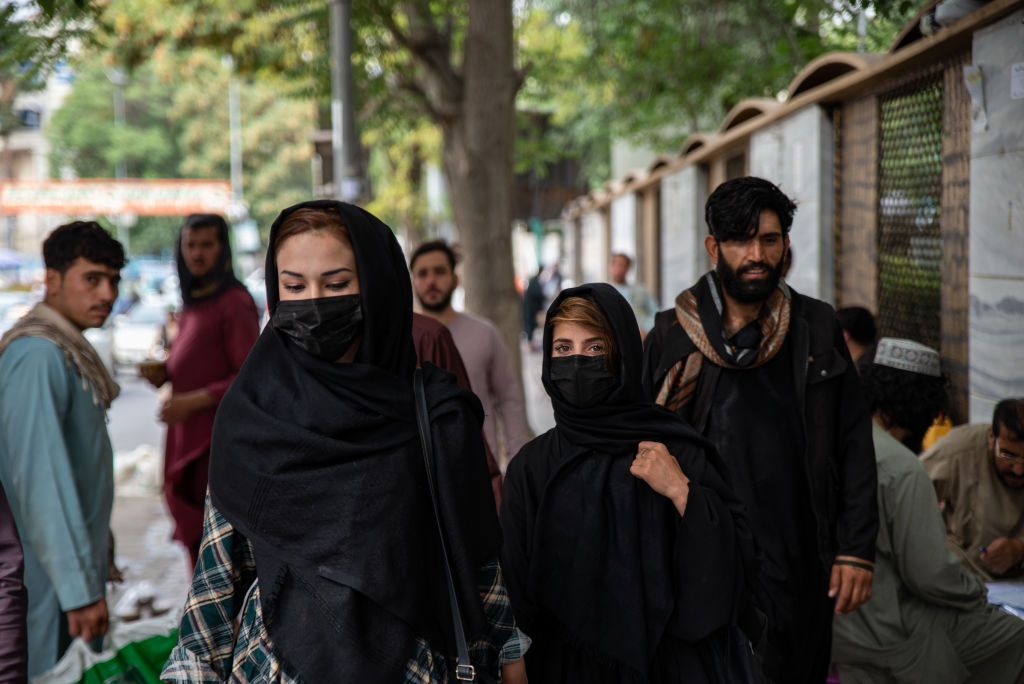
This month marks one year since the Taliban has been in power in Afghanistan. During this time, the Afghan people, especially Afghan women, have experienced a dramatic reduction of their human rights and freedoms.
The regime has eroded much of the progress made in the past 20 years and, in many ways, has plunged the country back to the late ’90s when the Taliban ruled for the first time. Starting early in their takeover, the Taliban ordered women to stay home, framing the decision as a “safety” measure. Since then, women have also been prohibited from paid employment, traveling alone by car or plane, attending school, or seeking medical care without a male relative or mahram.
Below is a comprehensive review of the edicts of the past year, as well as the myriad ways the women of Afghanistan are leading the resistance.
September
The Edicts Begin
The initial order issued in August 2021, asked women to stay home from work and nonessential travel “for their safety.” The Taliban argued that, because their soldiers were “not trained” to respect women, they should remain in their homes so they would not be hurt. While this edict was framed as a temporary measure, it was a sign of the permanent changes that would follow in the coming year.
September, the first month of Taliban control, would bring many of these changes to life.
The Ministry of Women’s Affairs was shuttered and replaced with the Ministry for Preaching and Guidance—a somber sign of how the lives of Afghan women would change in the next year. Before the Taliban takeover, the Women’s Affairs Ministry was the foremost agency for promoting women’s rights and advancement in Afghanistan.
The Ministry for Preaching and Guidance, on the other hand—a throwback to the ’90s-era Ministry for the Propagation of Virtue and Prohibition of Vice—serves as the self-described morality police in Afghanistan, policing Afghans’ appearances and lifestyle, especially Afghan women. A holdover from the first Taliban regime, the ministry is responsible for most of the Taliban’s edicts regarding women. Many can still recall the violence of this ministry: Its employees roamed the streets searching for people who were not following Taliban laws and administered punishments, including stoning, cutting limbs and lashing women and girls for doing simple things like painting their nails.
The Taliban regime’s new caretaker government includes no female Cabinet members, despite promises of a more inclusive government. The only women employed by the city of Kabul that were allowed to return to work were those whose jobs could not be performed by men, like cleaning women’s toilets.
“There are public female toilets [that need cleaning] in bazaars,” Kabul’s acting mayor, Hamdullah Nohmani, explained.
Afghanistan Is the Only Country in the World That Bans Most Women and Girls From High School Education
The government was not the only area to see massive overhauls in the Taliban’s first month in power. In September, co-education was banned and higher education was entirely segregated. At places of higher education where women were still allowed to attend, they were required to fully cover their faces and bodies. Additionally, the Taliban “temporarily” closed girls’ secondary education (middle and high school). They initially claimed secondary education would begin at the start of the next school year (in Afghanistan, the school year runs from March to December). Delaying girls’ secondary education until the following year, the Taliban argued, would allow them to ensure that girls’ education would be taught following Islam. These schools still have not yet reopened.
The first area that saw a complete and outright ban on women’s participation was athletics. Sports were neither “necessary” nor appropriate for women to play, as their face or body could potentially be exposed, the deputy head of the Taliban’s cultural commission, Ahmadullah Wasiq, told an Australian broadcaster.
November
Taliban Limits Women’s Access to Healthcare
November marked the Taliban’s first foray into limiting women’s access to healthcare. This edict prevented women from entering a health clinic without a mahram, or close male relative, to act as an escort for a woman to ensure her safety and morality.
By prohibiting women from accessing the essential services provided by these health centers without a mahram, the Taliban greatly decreased access to care, which was already limited in Afghanistan.
Later that month, the Taliban also banned women from appearing on non-news television, such as dramas, soap operas, and entertainment shows. Additionally, foreign shows were prohibited from being aired on Afghan televisions. The erasure of women from the media is a clear precursor to the erasure of women from everyday life.
December
Freedom of Movement Curtailed
The Taliban rounded out the year with major restrictions on women’s freedom of movement in December. New edicts informed women they were not allowed to travel further than 50 miles without a mahram. This directive also instructed vehicle owners to refuse service to women not wearing hijab or a full covering from head to toe. Along with the ban on solo car travel, came a ban on solo air travel. Afghan airlines were told by the Taliban to stop women from boarding flights unless traveling with a mahram. This combination of bans effectively prohibits women from traveling on their own and limits their freedom of movement.
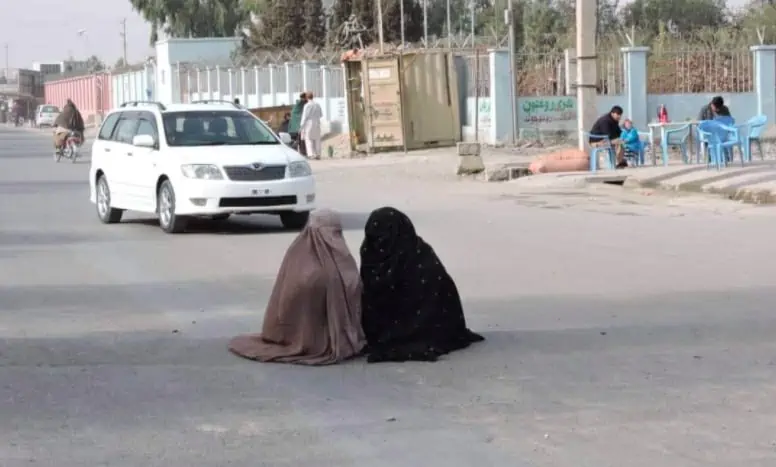
March
A False Start to a New School Year
March 2022 brought the start of the new school year in Afghanistan, and with that, the promise that schools would reopen. On March 23, thousands of girls headed off for their first day back at school. However, when they arrived at the school buildings, these girls were met with locked doors and armed Taliban guards telling them to return home.
This month also saw the gender segregation of public parks: Men and women were no longer allowed to attend the parks on the same days.
May
Women Must Cover Head to Toe
In May, women were ordered to cover themselves from head to toe in public, only revealing their eyes. Taliban officials explained that a burka was the preferred form of covering and recommended not leaving home at all, as it is the best form of hijab.
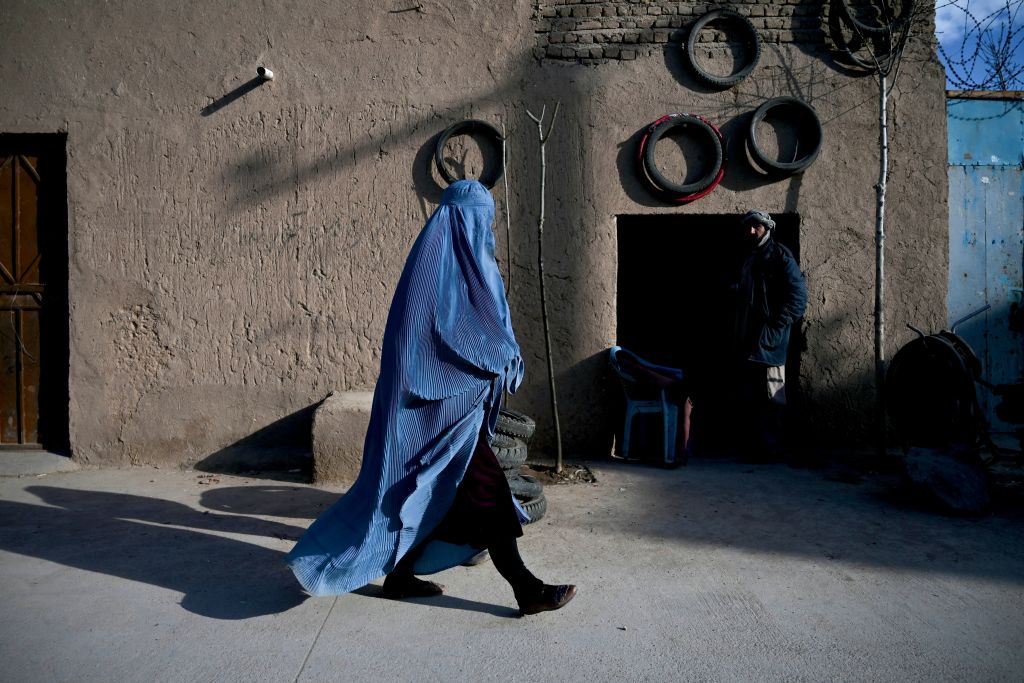
Taliban officials also decreed that male relatives would be responsible for compliance and face punitive measures if women were spotted uncovered while out. Although many Afghan women are defiant of complying with the full coverage, they are often harassed by the Taliban members.
On May 30, 2022, women in the Kandahar province, the birthplace of the Taliban, were completely banned from taking a taxi or public transportation without a mahram—regardless of the distance traveled. Women have already been restricted in how far they can travel alone and have been given various directives to remain at home. Now, with restrictions on public transit usage, women cannot maneuver freely, even if they had somewhere to go. This ban is especially harmful considering women in Afghanistan can no longer get drivers’ licenses, making them completely dependent on mahrams to take them anywhere they cannot walk.
Afghan Women Resist
While Taliban restrictions are increasing every day, there is one major difference between the Taliban’s first regime and the current one: the people they’re ruling over.
The Afghan people have changed significantly over the last 20 years, but the Taliban hasn’t. The Afghan people, through their efforts and with help from international partners, made major gains for women’s rights in almost every area. Maternal mortality rates decreased, literacy increased for both women and men, and women made up almost 30 percent of the government’s jobs.
One particularly notable area of growth for women’s rights in Afghanistan was education. Before the Taliban’s return, 3.5 million girls were enrolled in schools, making up 40 percent of total enrollment. Twenty years ago, during the Taliban’s first regime, only 1 million students were enrolled, and almost none of them were girls, most of whom were forced to study in secret.
After every edict the Taliban has released to restrict their rights, women have taken to the streets. These protesters put themselves in incredible danger. At these protests, women have been harassed, detained, put in prison in unknown locations, and assaulted by Taliban soldiers. However, despite these risks, Afghan women and girls have continued their advocacy and fight for their fundamental human rights.
Famine and Economic Crisis
The human rights crisis women face in Afghanistan is exacerbated by the country’s economic crisis. An extensive drought (the worst in the country in two decades) and soaring inflation have pushed thousands into poverty. About 95% of Afghans are not getting enough to eat, while 80% of households are in debt. In addition, the Taliban’s return to power has led to international sanctions and the halting of many aid corridors, partly because of their track record on women’s rights. Many aid groups are struggling to get money and supplies into the country due to fears of Taliban interception. In the past, the Taliban has tried to divert these funds to their supporters instead of the people who need it most, particularly women. Due to the persistent violence in the region, there are several female-led households. These households are especially at risk since the new Taliban restrictions prevent women from traveling and working.
Take Action for Afghan Women
One way to support women in Afghanistan is to push the United States and the United Nations to continue not to recognize the Taliban as a legitimate government. Recognition of the terrorist organization would eviscerate the rights of women and girls in Afghanistan and around the globe, showing that the U.S. is willing to look past gross human rights abuse abroad while continuing to engage with authoritarian states worldwide. Call or write your representatives in Congress or President Biden and let them know that this is an issue the American people are passionate about.
Since Afghanistan has been receiving aid from the U.S., U.N., and many other non-governmental organizations for decades, it has well-developed aid corridors, and many groups are familiar with the country’s needs. While the speed of the Taliban’s return to power was largely unanticipated, local and international aid groups have been able to build off the existing aid infrastructure. However, the Taliban’s return to power has led to international sanctions and the halting of many aid corridors. Aid groups have relied on limited engagement to meet urgent needs without recognition. Humanitarian aid can and should be provided through Afghan and international organizations, which can provide the Afghan people with safe housing, equal distribution of food, and other assistance, regardless of gender, ethnicity or religion.
Hundreds of thousands of Afghans have been running for their lives because of threats from the Taliban. The United States has accepted tens of thousands of Afghans who had helped the mission in Afghanistan, but more resources are needed to support new refugees. If you are looking to provide immediate help in a tangible way, consider reaching out to a local refugee resettlement group or to a new neighbor who might have arrived from Afghanistan. You can also help support the Afghan Adjustment Act, a bipartisan bill recently introduced in Congress provides a legal pathway for citizenship for the newly arrived Afghans. You can support it by calling your members of Congress and urging its passage.
Finally, seek out news and share stories you hear to keep this issue in the news. This allows for more comprehensive and consistent reporting, which can lead to better policy recommendations.
U.S. democracy is at a dangerous inflection point—from the demise of abortion rights, to a lack of pay equity and parental leave, to skyrocketing maternal mortality, and attacks on trans health. Left unchecked, these crises will lead to wider gaps in political participation and representation. For 50 years, Ms. has been forging feminist journalism—reporting, rebelling and truth-telling from the front-lines, championing the Equal Rights Amendment, and centering the stories of those most impacted. With all that’s at stake for equality, we are redoubling our commitment for the next 50 years. In turn, we need your help, Support Ms. today with a donation—any amount that is meaningful to you. For as little as $5 each month, you’ll receive the print magazine along with our e-newsletters, action alerts, and invitations to Ms. Studios events and podcasts. We are grateful for your loyalty and ferocity.
Up next:




